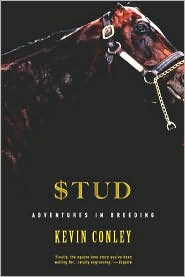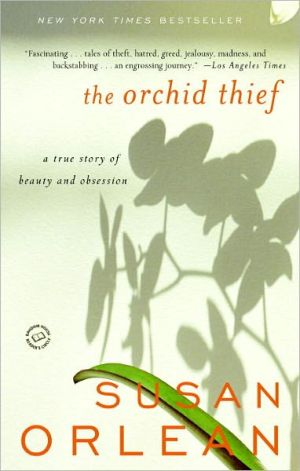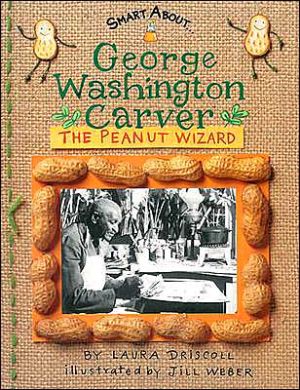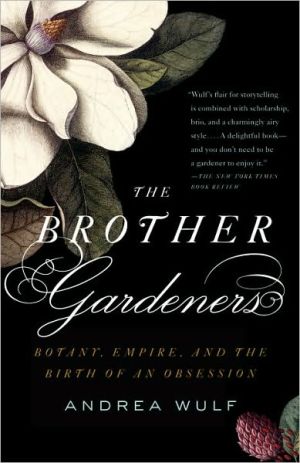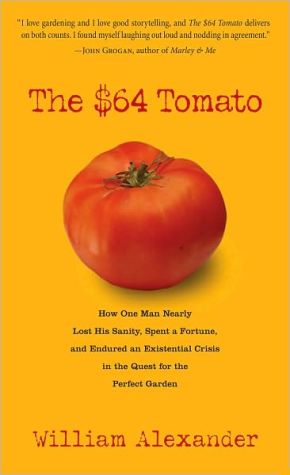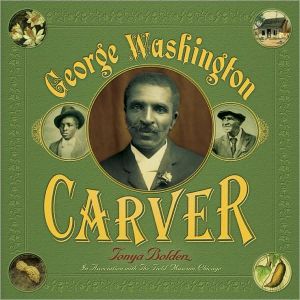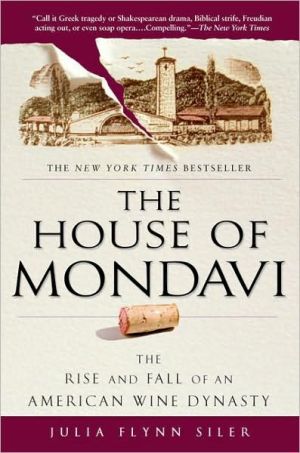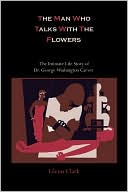Stud: Adventures in Breeding
Sex. Money. Horses.\ Every year, on Valentine's Day, the great Thoroughbred farms open their breeding sheds and begin their primary business. For the next one hundred and fifty days, the cries of stallions and the vigorous encouragement of their handlers echo through breeding country, from the gentle hills of Kentucky to the rich valleys of California. Stud takes us into this strange and seductive world of horse breeding. We meet the world's leading sire, Storm Cat, the Triple Crown winner,...
Search in google:
Sex. Money. Horses. Every year, on Valentine's Day, the great Thoroughbred farms open their breeding sheds and begin their primary business. For the next one hundred and fifty days, the cries of stallions and the vigorous encouragement of their handlers echo through breeding country, from the gentle hills of Kentucky to the rich valleys of California. Stud takes us into this strange and seductive world of horse breeding. We meet the world's leading sire, Storm Cat, the Triple Crown winner, Seattle Slew, and a nearly unmanageable colt, Devil Begone, who has found peace and prosperity on the banks of the Rio Grande servicing desert mares like Patty O'Furniture. Cheap stud, top stud, old stud, wild stud, from the Hall of Fame horse to the harem stallion with his feral herd, Stud looks at intimate acts in idyllic settings and the billion-dollar business behind them. Publishers Weekly Funny, insightful and surprisingly engaging, this part travelogue on Kentucky bluegrass country and part guide to equine breeding offers far more than one might initially expect. The world's priciest stud, Storm Cat (a direct descendant of Secretariat), earns a whopping $500,000 per tryst. The randy stallion's "muck" is used by Campbell Soup to fertilize its mushroom fields. Conley, a New Yorker staff writer, takes readers to an auction where two camps a stoic group of Irishmen known in horse circles as "the boys" and a modish collection of sheikhs inexplicably called "the Doobie Brothers" square off on fillies and colts fetching upwards of $3 million. But Conley doesn't stop there: he considers the advancement of civilization through the history of horses. He argues that through horse trading the nomads of Kazakhstan brought their proto-Indo-European language to most of Europe and South Asia. "History had begun," he writes, "built on the way a horse can cover ground." Conley also illustrates the racial and socioeconomic backdrop of horse country with rather telling accounts of the interactions between black and white, blue collar and blueblood that shape the equine community. The upshot is a vividly equine-centric view of social, cultural and economic human history. (Mar.) Copyright 2001 Cahners Business Information.
A Stud’s Life \ My first contact with the world’s No. 1 stud at his place of business—that would be Storm Cat, at the stallion complex on W. T. Young’s Overbrook Farm, in Lexington, Kentucky—came over the phone. "There’s his holler now," Dr. Joe Yocum, the farm vet, said calmly, from his office in the breeding shed, above a noise that sounded like the fury of hell. "He just jumped on her. I’ll look out my window here and tell you when he’s finished....Yup." The doctor chuckled. "He wouldn’t be real popular with the women."\ The Kentucky Derby is often called the most exciting two minutes in sports; Storm Cat is probably its most expensive thirty seconds. His stud fee for the 2002 season hit $500,000, nearly double that of his closest rival. A conservative estimate of fifty guaranteed-live-foal contracts suggests that Storm Cat will earn twenty-one million this year. If he played in the N.B.A., that figure would make him the league’s third-highest-paid player. As a stud, no one’s even close.\ Why would anyone pay that much for Storm Cat’s services? In 1999 and 2000, Storm Cat’s offspring earned more than $21 million dollars at the track, almost $7 million more than anyone else’s. Furthermore, several Storm Cat colts who have recently launched their own stud careers—Storm Boot, Hennessy, Forest Wildcat—have begun siring stakes winners and high-priced yearlings, justifying hefty hikes in their stud fees. In other words, just thirty seconds with Storm Cat gives you a chance of landing your own franchise Thoroughbred. And many people who bring a mare to Storm Cat have more immediate plans for the offspring: at the 2001 yearling sales, Storm Cat babies sold for an average of $1.68 million.\ If he were any other breed—miniature, trotter, quarter horse, Standardbred, Lipizzan, Arabian, American warmblood—Storm Cat could just jump on a padded phantom breeding mount (like a pommel horse, but "natural, mare-like," and equipped with a "side opening and quick release valve") and his half of the bargain could be frozen and shipped Priority Overnight to any mare in the world. But Storm Cat will never suffer this indignity, because the Jockey Club, the official registry of Thoroughbred racing, forbids artificial insemination. Only registered horses can race on the Thoroughbred circuit, and the Jockey Club registers only horses conceived by what is delicately termed "natural cover." Storm Cat’s job—and the most profitable sector of a high-stakes industry—is safe.\ Success at the track is merely a first step toward such profits. Take Cigar, who won sixteen races in a row and retired to stud in 1997, after earning a record $9.9 million. Not one of the eighty mares booked for his first and only season became pregnant, but his owners were lucky: Italy’s Assicurazioni Generali made good on Cigar’s $25 million infertility-insurance policy. Far more common than infertility is mediocrity, and no policy covers the champion horse who fails to produce a winner. As Tom Wade, the groom to the 1977 Triple Crown winner, Seattle Slew, said, "Just because a horse wins a million dollars, that don’t make him no stud."\ For a stallion, the eagerness of a teen-ager is considered the mark of a professional—breeders call it "great libido." Although Storm Cat’s libido is spoken of mostly in economic terms, from time to time something else creeps in: awe, fear, relief. Breeding horses is dangerous—last March, Class Secret, a twelve-year-old son of Secretariat, the 1973 Triple Crown winner, had to be euthanized after a mare he was mounting broke his leg—so dawdling is not appreciated. It’s risky for the people involved, too. One stallion manager told me that sildenafil citrate—Viagra—had been tested on horses and rejected, largely because nobody who works in the breeding shed wants to fool around with a rearing half-ton, hormonally enraged animal trying to set a personal endurance record.\ With a horse like Storm Cat, however, the worrying doesn’t stop at the breeding shed. He’s only eighteen years old, comfortably mid-career for a stud (Mr. Prospector, the sire of the 2000 Derby winner, Fusaichi Pegasus, was twenty-nine when he died in 1999). But even innocent conversations about him—what he likes to eat (bluegrass, oats, and sweet feed), where he sleeps (in a hilltop barn, near his winter paddock), what he does for fun (lies down in a big sandpile and rolls around)—tend to veer into elaborately imagined premonitions of his death and the state-of-the-art precautions taken to guard against it. One of his sandpiles, for example, is bounded by an unusual stretch of solid wood, because somebody worried that he might roll a foreleg under the standard fencing and break a bone as he tried to stand up. And if you want to meet the farm’s entire staff in the next forty seconds? Just light a cigarette near Storm Cat’s stall.\ • • • • • • • • • •\ On a sunny morning in May, halfway through the four-and-a-half-month breeding season, the sire looks vigorous. In his official photographs, Storm Cat can come across as smug and bullnecked and a little thick in the waist, but the camera must add a few pounds, because in person, prancing in his paddock, he has the hauteur and the low body fat of an underwear model. He’s a dark bay, but when he moves in the sunlight you can pick up flashes of a honey-gold color that comes from the chestnut horses on his mother’s side—Terlingua, Storm Cat’s dam (his mother), and his grandsire, Secretariat. He has white spats on his left legs, also from Terlingua, which give him a light-footed, high-stepping look, even when he’s just pacing over the grass.\ "I like his weight now," Wes Lanter, who manages the ten stallions at Overbrook Farm, says. "Twelve hundred and sixty pounds. I think that’s a real good weight for him." Lanter runs the operations in the breeding shed with the nimbleness of a linebacker coach, but everywhere else he moves with hound-doglike deliberateness. To introduce me to the planet’s most valuable piece of horseflesh, for example, he folds his arms and says, "There he is." At first, Storm Cat just rips at the grass, pretending he doesn’t see us, but after a while he edges over to the fence to investigate. He has a smoldering dark patch between his eyes with a white diamond on it, and a sharp crescent moon way over near his left nostril, a curious marking that makes him look moody and dangerously attractive. He ducks his head behind a board on the fence and gives me the once-over—more eye contact than his mares usually get—and I raise my hand to the little white line that runs down his muzzle. "Stand back," Lanter says, since stallions bite. "He can fool you." As soon as I touch him, Storm Cat ends the interview and walks away.\ Suddenly, he lights out for the end of his paddock. Through a break in the trees, he looks over the creek, past the horses nearer the breeding shed—it’s standard practice to place stallions with libidos lower than Storm Cat’s closer to the parade of action, a cheap sort of stimulant that cuts down on the time spent waiting for arousal—and roars convincingly. "A mare has arrived," Lanter says. "Not yours, Stormy." Undeterred, Storm Cat paces back and forth beside the fence—he has worn a path there—and roars again. Lanter seems pleased, in a proud and wistful prom-chaperon way. "He’s looking for dates," he says.
\ From Barnes & NobleThe Barnes & Noble Review\ From the very title of the book, readers get the sense that Stud is about more than just horses. New Yorker essayist and editor Kevin Conley shows there is money to be made from horses having sex -- or just getting inseminated artificially, for that matter. The sophisticated world of happy horsemanship is a fascinating one indeed -- that is, if cooled horse semen shipped via FedEx in Styrofoam boxes does not make you queasy. \ Predicting which horses will have fast offspring is not as easy as it may seem. Though champion thoroughbreds are of undoubtedly good stock, it is sometimes the also-rans that breed Kentucky Derby winners. Stud fees escalate wildly from year to year, with the seed of the top studs sold at exorbitant prices to an exotic international cabal of millionaire gamblers and farm owners. Once the horses' services are bought, the act itself is painstakingly manipulated by human helpers, and even videotaped for protection against potential problems or lawsuits.\ Though less inhibited than humans, horses are no less confounding in their mating behavior. The topic is unique, and Stud takes a multifaceted look both at how the horses are primed for the pump and how their humans handle them. Stud does suffer slightly from simple repetition: The underlying humor of the writing is based on the anthropomorphic gaze at horse behavior, and the "tee hee hee" of equine sex is a running joke that tires by the end. Then again, with lines like "Hershey sums up the neighborly disagreement with a fecal briquette" and "This poop-off is followed by a volley of snorts," perhaps we can all afford to chuckle. (Brenn Jones)\ \ \ \ \ \ Publishers WeeklyFunny, insightful and surprisingly engaging, this part travelogue on Kentucky bluegrass country and part guide to equine breeding offers far more than one might initially expect. The world's priciest stud, Storm Cat (a direct descendant of Secretariat), earns a whopping $500,000 per tryst. The randy stallion's "muck" is used by Campbell Soup to fertilize its mushroom fields. Conley, a New Yorker staff writer, takes readers to an auction where two camps a stoic group of Irishmen known in horse circles as "the boys" and a modish collection of sheikhs inexplicably called "the Doobie Brothers" square off on fillies and colts fetching upwards of $3 million. But Conley doesn't stop there: he considers the advancement of civilization through the history of horses. He argues that through horse trading the nomads of Kazakhstan brought their proto-Indo-European language to most of Europe and South Asia. "History had begun," he writes, "built on the way a horse can cover ground." Conley also illustrates the racial and socioeconomic backdrop of horse country with rather telling accounts of the interactions between black and white, blue collar and blueblood that shape the equine community. The upshot is a vividly equine-centric view of social, cultural and economic human history. (Mar.) Copyright 2001 Cahners Business Information.\ \ \ Library JournalThis book was not written to meet massive pent-up reader demand, but it does offer an engaging lay reader's introduction to the business of breeding Thoroughbred horses. Conley, a staff writer with The New Yorker, takes us to high-profile horse auctions; to picturesque big-money farms in bluegrass Kentucky, the Mecca of Thoroughbred breeding; to second-tier farms in California and a remote stud-farm-of-last-resort run by old hippies in New Mexico; to a preserve for semiferal Shetland ponies where nature takes its course without careful human intervention; and (many times) into the high-stakes bedroom, so to speak. We meet Storm Cat, the stud's stud, whose services are sold for up to $500,000 per breeding and whose offspring earned more than $21 million at the track in 1999 and 2000; the old warrior Seattle Slew, coming back to his duties following delicate surgery; and Distinctive Cat, a son of Storm Cat and now a stud himself, who, through a "telepathic animal communicator," grants the author an interview (Distinctive Cat is happy with his job, thank you, and he doesn't even take into account the sexual aspect). A nice buy for libraries with big budgets or that are located in horse country. Jim Burns, Jacksonville P.L., FL Copyright 2001 Cahners Business Information.\ \ \ \ \ Kirkus ReviewsThoroughbred stallions are an aloof lot, so they don't make a big fuss over being graced with early retirement, plentiful sex, and an enviable cash flow. New Yorker staff writer Conley provides all the needful color commentary with cool brio and a heart-gladdening display of language. His prose displays an easy grace, lightly worn intelligence, and unbeveled enthusiasm that makes you plain like the guy rather than envy him. He can nail physical appearances: one horse has "a sharp crescent moon way over near his left nostril, a curious marking that makes him look moody and dangerously attractive"; another's "lips were covered with an unsightly green froth that made him look louche beyond redemption, like a pasture-grazing Henry VIII." Or he can skewer a whole era: "harebrained conclusions based on zoological minutiae were as typical of the nineteenth century as weird facial hair." One suspects this writer could tackle any subject with aplomb, but thoroughbred horse-breeding, populated by violent, menacing subjects boasting competitive streaks that border on the criminal, certainly offers a fine canvas for his brush. The horse world is awash with entertaining characters, from bookies and grooms and bloodstock agents to kings, sheikhs, and tax exiles; Conley takes their measure like an expert tailor. He captures the horses' personalities too, elevating them above the status of sex machines (not that it's so terrible to earn $20 million annually, as top stud Storm Cat does) and inviting them into the story as genuine characters. Mostly, Conley sticks to the rarified air of thoroughbred farms in Bluegrass Kentucky, that unfussy rolling landscape with its own referents: thoroughbreds must benaturally "covered," and any offspring produced by artificial insemination will not keep their bloodline. Stud ends, however, with the author standing amidst a herd of wild horses during a driving rain, the whole pack serving as a big weathervane by shifting to keep their butts to the wind. Simply wonderful. Author tour\ \
